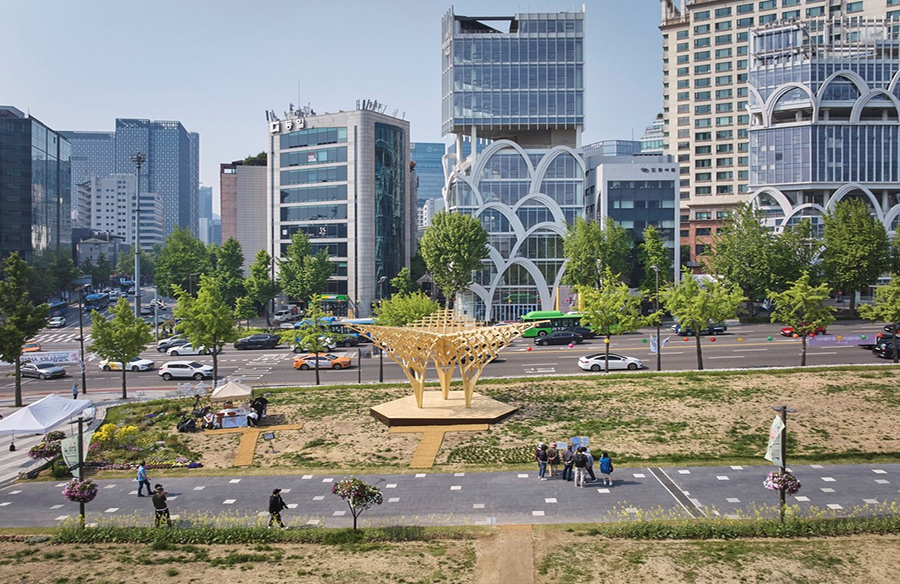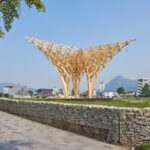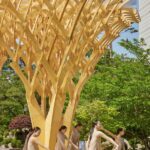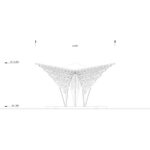Architectural Concept
Situated in Jongno-gu, South Korea, the Pavilion of Contemplation, designed by JK-AR, is the latest addition to the renowned “Tree Series.” This series of design experiments focuses on reimagining the traditional wooden bracket system, a distinctive feature of East Asian timber buildings. The Pavilion of Contemplation seeks to redefine the concept of the Asian pavilion, known as ‘-jeong,’ blending structural integrity with aesthetic appeal.
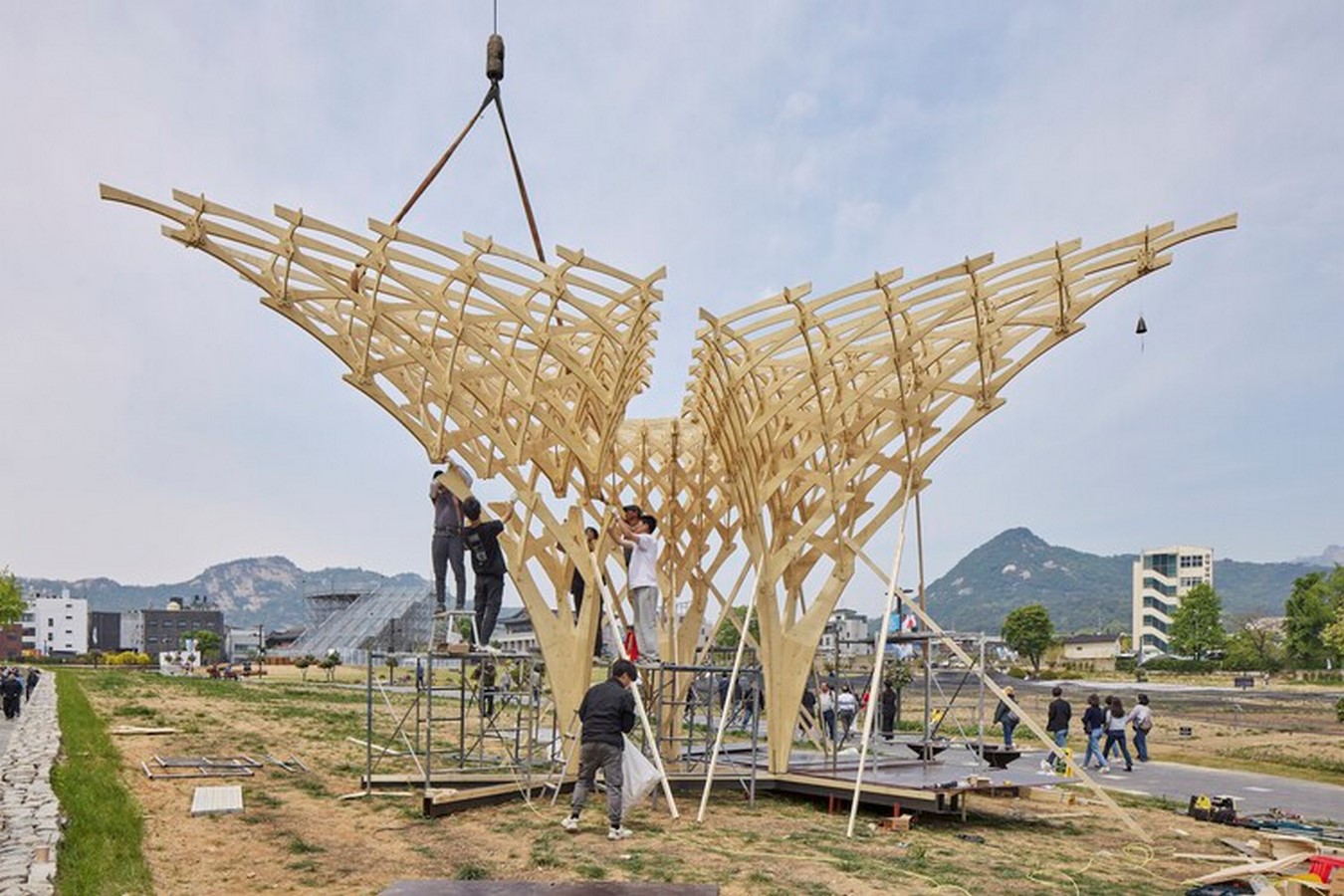
Functional Versatility
Functionally, the pavilion serves as a shelter within Songhyeon Park, adjacent to the historic Gyeongbokgung Palace, while also serving as a temporary stage for dance and music performances. However, its design allows for diverse interpretations. To some, it represents a contemporary Asian pavilion, while others may see echoes of vernacular architecture from Southeast Asia and Africa. Some may even perceive it as an artificial tree, with its structure supported by three trees, resembling a small forest within the cityscape.
Responding to Diverse Desires
The Pavilion of Contemplation embodies a response to the varied desires and perceptions of architecture. While it embraces modern interpretations, its fundamental purpose remains rooted in providing a sanctuary for the human body and mind. In an era where the original values of architecture are increasingly relevant, this pavilion symbolizes a return to the essence of shelter and solace. Ultimately, it invites contemplation on whether it represents a revival of the primal concept of the hut, echoing the innate human need for refuge and connection with nature.
